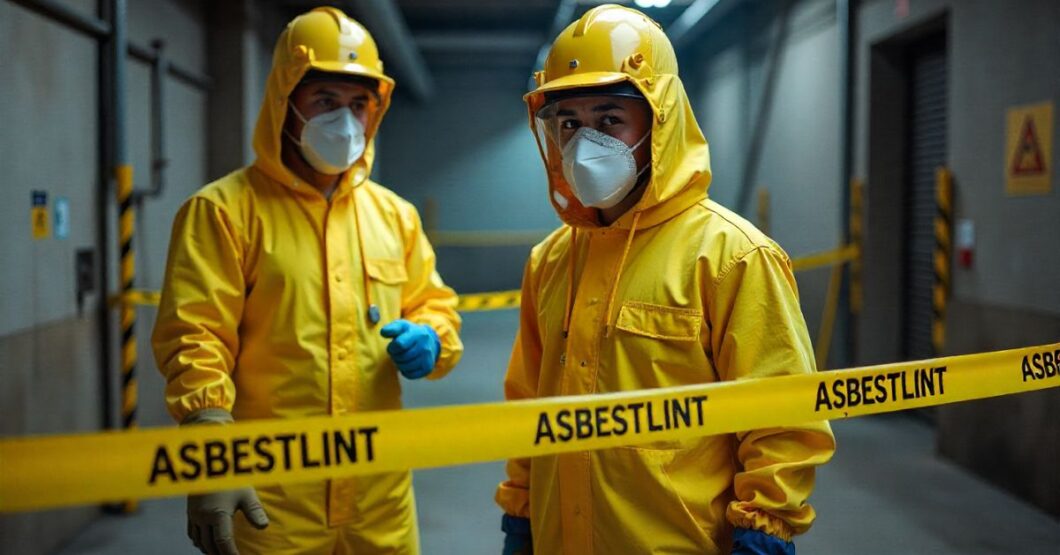Introduction
If you live or work in a building that’s more than 30 years old, you might be breathing in something you can’t see, smell, or feel—but that could be seriously harming your health.
We’re talking about asbestlint, a lesser-known but highly dangerous form of airborne residue that occurs when old asbestos-containing materials begin to break down. Much like regular dust, this fibrous debris can settle into air ducts, behind walls, or in attics—but unlike normal debris, the long-term health risks are very real.
This guide is designed to help homeowners, building managers, and renovation contractors understand what this material is, how it forms, what the health implications are, and—most importantly—how to deal with it in 2025 using current regulations and recommendations.
Let’s break it down together.
What Is Asbestlint?
You’ve probably heard of asbestos, the fire-resistant material used for decades in insulation, roofing, and floor tiles. But asbestlint is a term for the ultra-fine dust that can come from those same asbestos-containing materials as they degrade or get disturbed.
This fiber-heavy residue can hang in the air, travel through ventilation systems, and settle on surfaces—becoming nearly impossible to clean without the right equipment.
Why This Should Matter to You:
- It’s invisible to the naked eye.
- It can hang in the air for hours or days.
- When inhaled, it gets lodged deep in the lungs.
- Most buildings built before 1990 are at risk of having old asbestos materials.
Even regular tasks—like changing an air filter or drilling into a ceiling—can release fibers without you even realizing it.
Where It Hides: Common Locations in Homes and Buildings
Ask any contractor or environmental safety expert, and they’ll agree: older buildings hide lots of secrets. One of those is dust-like fiber buildup from materials that haven’t been touched in years.
Here are the most likely places this harmful residue may accumulate:
| Location | What To Look Out For |
|---|---|
| Air Vents & HVAC Ducts | Gray or white fuzz collecting in filters |
| Insulated Piping | Dust around pipe wrappings or joints |
| Drop Ceilings & Tiles | Crumbly or flaky tiles above workspaces |
| Old Carpet Padding | Fibrous dust collecting underneath padding |
| Behind Walls | Especially near outdated insulation |
Buildings constructed before the early ‘90s are especially at risk—particularly schools, government offices, and industrial facilities.
Why Exposure Can Be Dangerous
Breathing in clean air is a human right, but what happens when it’s quietly contaminated?
The tiny fibers that make up asbestos-based residue can lodge deep in your lungs and stay there for life. Because they’re so fine, they bypass your body’s natural defenses and cause long-term damage.
Health Conditions Linked to Exposure:
- Asbestosis – a chronic lung disease causing scarring and inflammation.
- Mesothelioma – a rare, extremely serious cancer of the lung lining.
- Lung Cancer – higher risk, especially among smokers.
- Respiratory Irritation – even short-term exposure can cause persistent coughing or discomfort.
In 2025, medical reports have confirmed a rise in environmental injuries related to indoor air pollutants—especially in aging buildings not up to current safety codes.
Infographic:
Exposure Severity Comparison
| Time Exposed | Health Impact |
|---|---|
| Hours or Days | Low—mild irritation in rare cases |
| Weeks or Months | Medium—shortness of breath, fatigue |
| Years+ | High—lung scarring, cancer risk increases |
Legal Rules Around Asbestos Dust (Updated for 2025)
Handling materials that might release asbestos dust is heavily regulated—and for good reason.
In the U.S., Current 2025 Laws Include:
- EPA Compliance – HVAC and insulation updates in pre-1990 buildings must be inspected for contaminants if disturbed.
- OSHA Guidelines – Employers must ensure a safe breathing environment, especially during renovation or demolition.
- Local Building Codes – Many cities (New York, Chicago, Seattle) now require annual air quality checks in public buildings.
Failure to comply isn’t just dangerous—it’s expensive. Fines for ignoring dust contamination during construction can exceed $25,000 per incident in 2025.
How To Tell if It’s Present
Here’s the hard truth: you can’t identify asbestos particles with your eyes. But there are warning signs you can watch for:
- Grayish lint or dust collecting around vent covers
- Flaky or peeling insulation on pipes or ceilings
- Slightly fuzzy dust that keeps returning after cleaning
- Tickle or irritation in the throat after time indoors
If you suspect something, don’t wait—get a sample tested.
Recommended Testing Methods:
| Type of Test | When to Use It | Turnaround Time |
|---|---|---|
| PCM (Basic Microscopy) | Quick visual check | 24–48 hours |
| TEM (Electron Microscope) | Accurate & detailed lab test | 4–7 days |
Always hire a certified environmental testing provider. Lab results will let you know whether immediate action is needed.
How Removal Actually Works
If a test confirms any amount of asbestos dust, the next steps must be taken seriously.
A Certified Team Will:
- Isolate the Area – Using plastic sheeting or containment units.
- Install Negative Pressure – To keep dust from spreading.
- Use HEPA / Wet Cleaning Tools – To trap, not stir up, the particles.
- Dispose Safely – Following strict hazmat disposal rules.
Removing it yourself isn’t just risky—it can turn a small problem into a full-blown building contamination.
Should You Hire a Pro—or DIY?
While a few home tasks can be taken on with good research and responsible gear, this isn’t one of them.
| Factor | Licensed Professional | DIY Attempt |
|---|---|---|
| Legal? | Yes, with certs from EPA or NVLAP | Often illegal or unadvised |
| Safe? | Yes—with full protection gear setup | No—fibers can linger and spread |
| Costly? | Yes, but often insurance covers it | Cheaper now, costlier later |
Even vacuuming asbestos-laced dust with a standard cleaner without a filter can blow it back into the air and expose everyone.
How to Keep It from Returning
Once removed, you’ll want to make sure this danger doesn’t creep back. That’s where ongoing maintenance and prevention come in.
Here’s how to stop future buildup in your vents or rooms:
- Have HVAC units professionally cleaned yearly
- Install HEPA filters in high-risk environments
- Avoid breaking or drilling old ceiling tiles or pipes
- Have your building re-assessed every 2 to 3 years if built before 1990
Even updated buildings benefit from this regular care—especially those converted from industrial spaces to residential units.
What It Costs to Fix the Problem
Pricing can vary depending on the building size, the amount of dust, and how much testing or removal is needed.
Average 2025 Prices:
| Service | Estimated Cost |
|---|---|
| Basic Air Quality Test | $200 – $450 |
| Certified Lab Sample | $300 – $800 |
| Full Dust Removal | $1,800 – $6,000 |
| Vent Maintenance Plan | $150 – $500/year |
Check with local environmental agencies—some areas now offer rebates or grants for certified testing or removal.
What’s Next for Air Safety in Buildings?
Good indoor air is no longer just a luxury—it’s turning into a basic building standard. And awareness around contaminants like asbestos residue is driving big change.
What’s Coming in 2025 and Beyond:
- Smart Air Monitors with asbestos detection
- Drone-inspections for large building ductwork
- Eco-friendly foam replacement programs
- More tenant rights around air safety in rentals
Governments across the U.S. and Europe are also investing in research to phase out existing asbestos material faster and safer.
This isn’t just about avoiding danger—it’s a matter of creating healthier, longer-lasting homes and workplaces for generations to come.
FAQs
What exactly is asbestlint?
It refers to the fine, fibrous dust generated when asbestos-containing materials break down.
Can it harm my family?
Yes, especially with long-term exposure. Kids and older adults are the most sensitive.
Can I clean it myself?
No. Trying to clean it can make things worse. Always work with certified professionals.
Does all older dust contain asbestos?
No, but any dust from materials pre-1990 should always be tested to be safe.
Is it found in modern homes?
Rarely in new buildings, but definitely in homes built or renovated before 1990.
Conclusion
You may never have heard the term “asbestlint” before today. But if you live or work in an older structure, it could very well be part of your environment already—without you knowing. And that makes it worth taking seriously.
Don’t wait for symptoms or for visible signs. Schedule a professional inspection, look into smarter air safety tools, and make health-driven decisions for your property.
Take the first step today: Contact a certified environmental testing service for an inspection—and breathe a little easier tomorrow.




